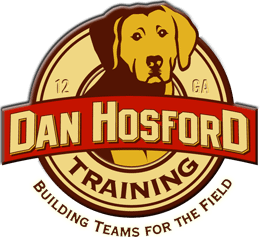Hey there, fellow dog trainers and waterfowl enthusiasts!
As your dog’s training partner and best friend, it is important to recognize there are as many ways to train a good Gun Dog as there are dogs to be trained, and the people wanting to train them. The method I’m presenting in this blog is only one of several successful methods I have designed.
Today, we’re diving into a method I call “Angle Entry and Angle Exit” – a technique designed to sharpen your dog’s retrieves in waterfowl hunting scenarios. This method focuses on building precision and efficiency, ensuring your dog gets to the bird and back to you with speed and accuracy, even in challenging conditions.
Why Angle Entry and Angle Exit?
Think about a typical waterfowl hunting scenario. Birds often fall at varying distances and angles from your blind or position. A dog that charges straight out, without considering the angle, might run past the bird, waste energy, or get disoriented.
The “Angle Entry and Angle Exit” method teaches your dog to:
- Assess the angle: Quickly understand the bird’s location relative to their starting point.
- Take an efficient path: Angle their entry into the water or field to minimize distance and obstacles.
- Maintain momentum: Keep moving smoothly towards the bird, avoiding unnecessary stops or changes in direction.
- Angle their exit: Return to you on a slightly different angle, anticipating your position and optimizing the return trip.
Breaking Down the Training
This method involves a series of progressive steps. It’s crucial to be patient and positive, celebrating small victories along the way.
Phase 1: The Basics – Land Retrieves
- Start with simple retrieves on land. Place a dummy at a slight angle from your dog’s starting position.
- Use verbal cues. As your dog is released, use a command like “Angle” (or whatever word you prefer) to encourage them to take a slightly angled path.
- Guide with hand signals. Gently guide your dog with hand signals if they start to drift off course.
- Reinforce success. Lots of praise and positive reinforcement when they nail the angled entry and retrieve.
Phase 2: Introducing Water
- Shallow water retrieves. Once your dog is consistent on land, move to shallow water. The principles are the same, but the water adds a new challenge.
- Vary the angles. Gradually increase the angle of the retrieve to make it more challenging.
- Introduce distractions. Add minor distractions, like decoys or other dogs (from a distance), to simulate a hunting environment.
Phase 3: Advanced Scenarios
- Deeper water retrieves. As your dog progresses, move to deeper water.
- Longer distances. Increase the distance of the retrieves, challenging your dog’s stamina and focus.
- Blind retrieves. Introduce blind retrieves, where the dog doesn’t see the bird fall. This requires more precise handling and trust between you and your dog.
- Simulated hunting scenarios. Set up realistic hunting scenarios, with decoys, blinds, and even the sound of calling.
Important Considerations
- Start slowly and gradually increase the difficulty. Don’t overwhelm your dog.
- Keep training sessions short and positive. End on a high note whenever possible.
- Use positive reinforcement. Reward your dog with praise, treats, or a favorite toy.
- Be patient and consistent. It takes time and effort to develop a skilled retriever.
- Adjust to your dog’s needs. Every dog learns at a different pace.
- Don’t forget safety! Always supervise your dog during water retrieves and be aware of potential hazards.
Beyond the Angle: A Holistic Approach
While “Angle Entry and Angle Exit” is a valuable technique, it’s important to remember that it’s just one piece of the puzzle. A well-rounded waterfowl dog also needs:
- Solid obedience training: Sit, stay, come, heel.
- Good retrieving skills: Marking, blind retrieves, handling.
- Water skills: Swimming, diving, retrieving in current.
- Exposure to hunting environments: Blinds, boats, decoys, gunfire.
Conclusion: Building a Strong Bond
Training your dog for waterfowl hunting is more than just teaching them to retrieve birds. It’s about building a strong bond of trust and communication. The “Angle Entry and Angle Exit” method can be a valuable tool in your training arsenal, helping you develop a precise and efficient retriever. But remember, the most important thing is to have fun and enjoy the journey with your canine companion!



